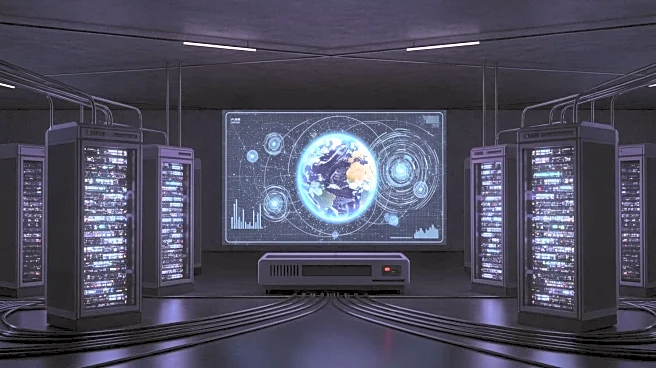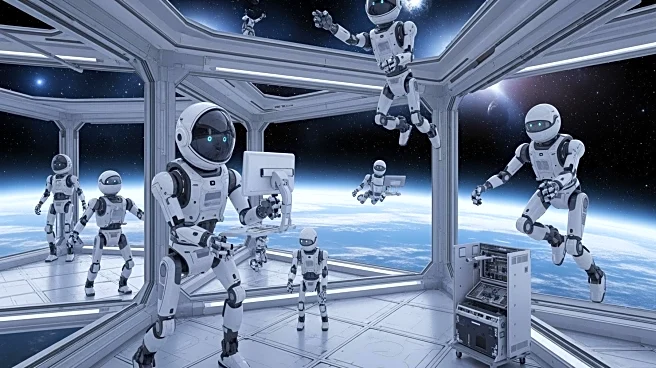What's Happening?
NASA researchers, in collaboration with Toho University in Japan, have utilized supercomputers to model the future of life on Earth, predicting that all life will become impossible in approximately one
billion years due to the sun's increasing heat. The study highlights that human life may face critical challenges much sooner as the Earth's atmosphere changes, leading to reduced oxygen levels, poor air quality, and rising temperatures. These predictions are based on models of climate change and solar radiation, with current signs already visible through increased solar activity affecting Earth's magnetic field and contributing to climate change.
Why It's Important?
The findings underscore the urgency of addressing climate change and preparing for long-term environmental shifts. As human-induced climate change accelerates, the potential for adverse living conditions increases, necessitating immediate action to mitigate these effects. The research also emphasizes the importance of exploring technological solutions and space colonization as potential strategies for sustaining human life. This has significant implications for public policy, scientific research, and international cooperation in addressing global environmental challenges.
What's Next?
Scientists are considering various technological interventions, such as closed life support systems and artificial habitats, to extend habitable conditions on Earth. Additionally, space agencies like NASA and private companies such as SpaceX are exploring long-term space colonization, including Mars missions, as viable options for human survival. These efforts may lead to increased investment in space exploration and technology development, as well as international collaboration to ensure the future of humanity.
Beyond the Headlines
The study raises ethical and philosophical questions about humanity's responsibility to future generations and the planet. It also highlights the potential for technological advancements to reshape human existence and the importance of sustainable development. As the reality of Earth's finite habitability becomes clearer, societies may need to reevaluate their priorities and approaches to environmental stewardship and technological innovation.











